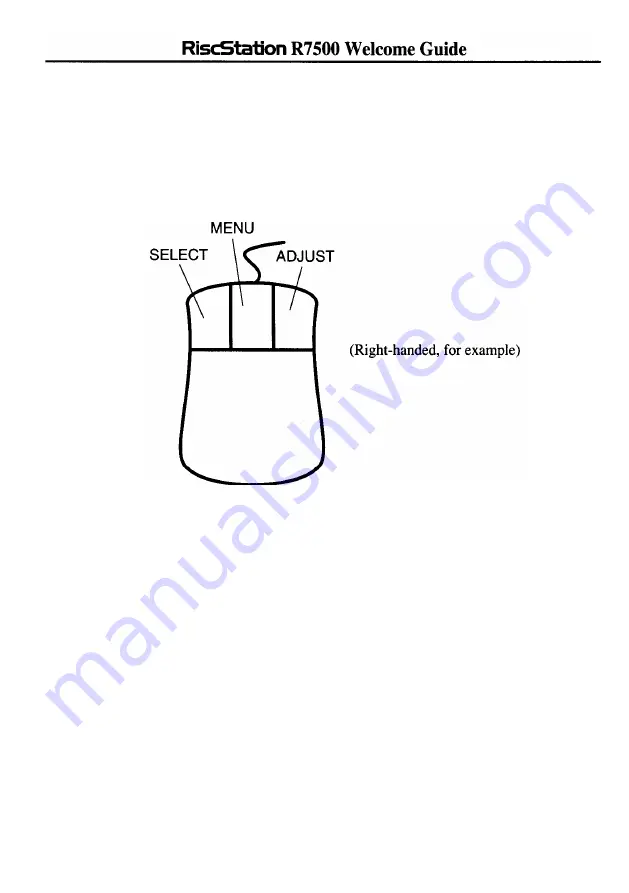
4. Using the Mouse
What is a Mouse ?
A mouse, in computer terms, is a hand-held control device. The mouse has a ball on its under
side. When the mouse is moved on a flat surface, the ball is rotated and sensors inside the
mouse recognise in which direction the mouse has moved and relay that information to the
computer. The pointer on the screen moves relative to the movements of the mouse.
Holding and moving the Mouse
Hold the mouse in your dominant (writing) hand with the curved side in your palm and the
flat under side (where the mouse-ball is) down on a flat surface. Position the mouse with the
mouse buttons at your fingertips, and the cable which connects to the computer leading away
from you with enough freedom for it to be moved around. Whilst you are getting used to
using the mouse, it is a good idea to line up the movement of the mouse with the positioning
of the monitor so that when you move the mouse forwards, away from you (towards the
monitor), the pointer on screen moves towards the top of the screen and when you pull the
mouse back, towards you (away from the monitor), the pointer on screen moves down
towards the bottom of the screen. Equally, as you move the mouse to the right the pointer on
screen will move towards the right hand side and as you move it to the left the pointer will
move to the left - this will help you to associate the correct movements of the mouse with the
desired movement of the pointer on screen. The pointer on screen will not disappear off the
screen. The edges of the Desktop area act as a boundary for the pointer. If the pointer does
disappear (it can be hidden from view when you are typing on the keyboard, for example), or
it is not easily spotted at first glance, then a small movement of the mouse should be enough
to make it appear of draw your attention to its location.
15
















































